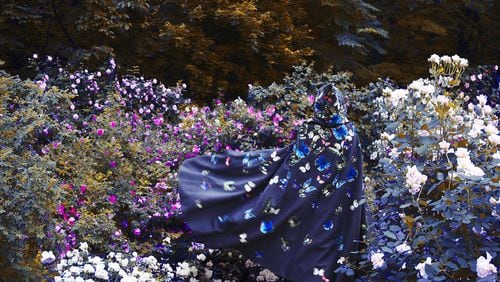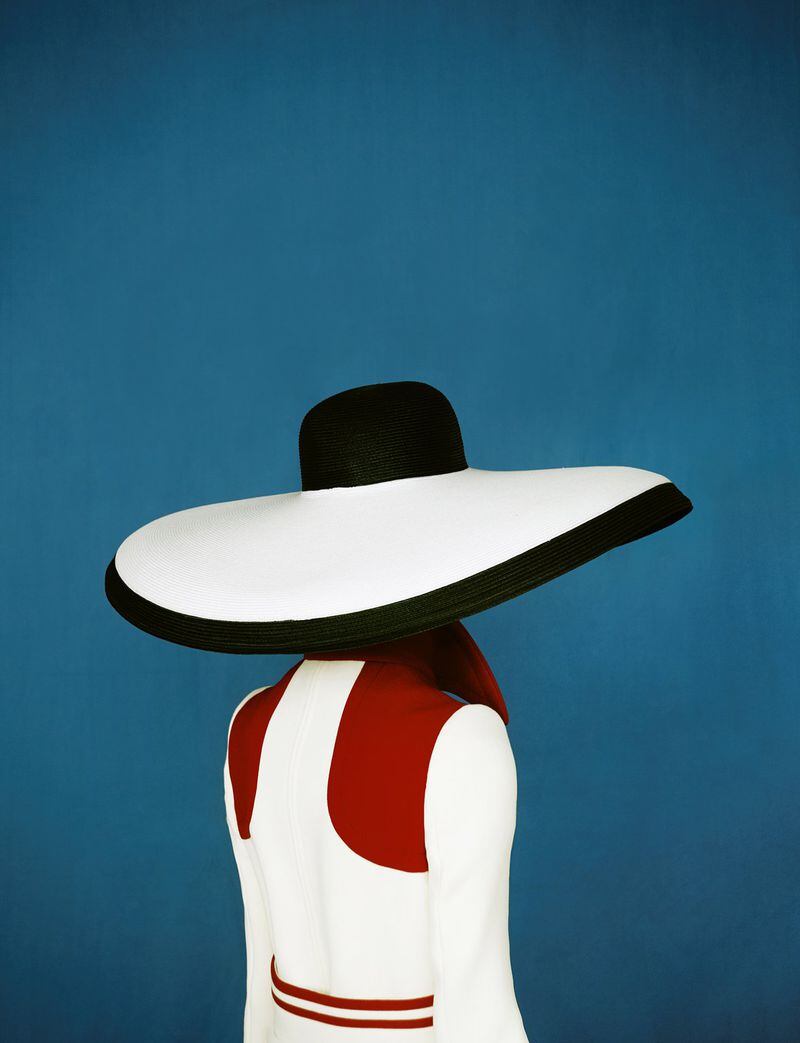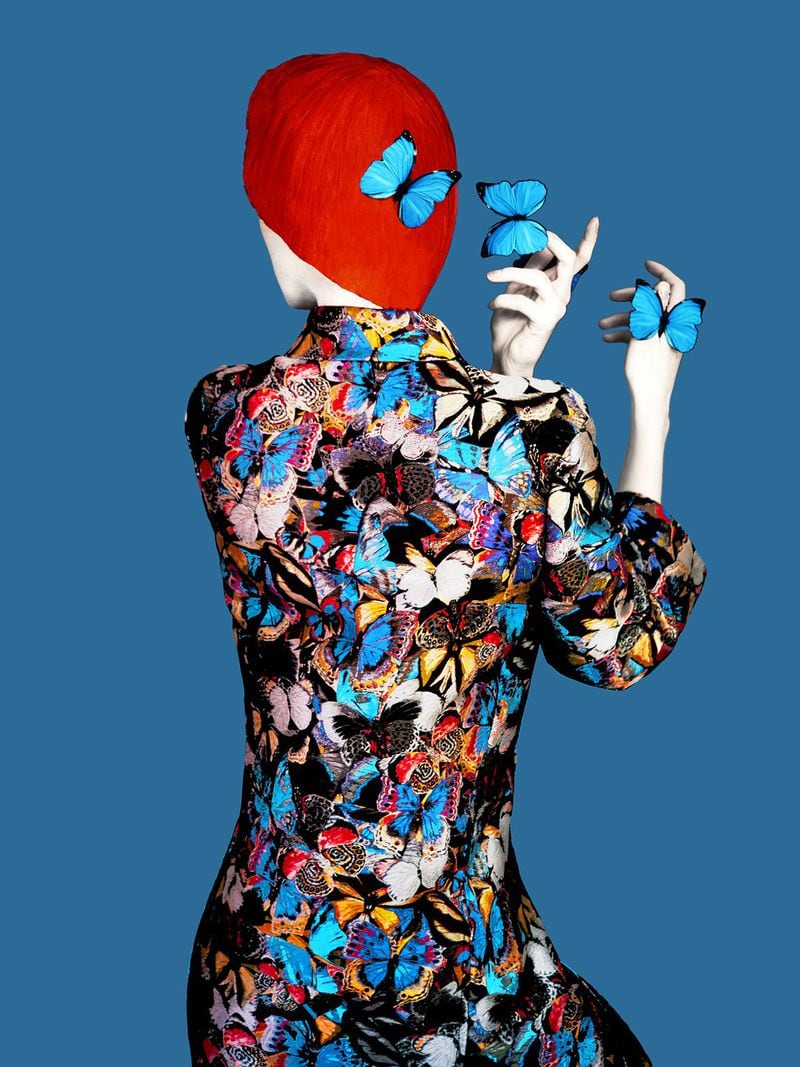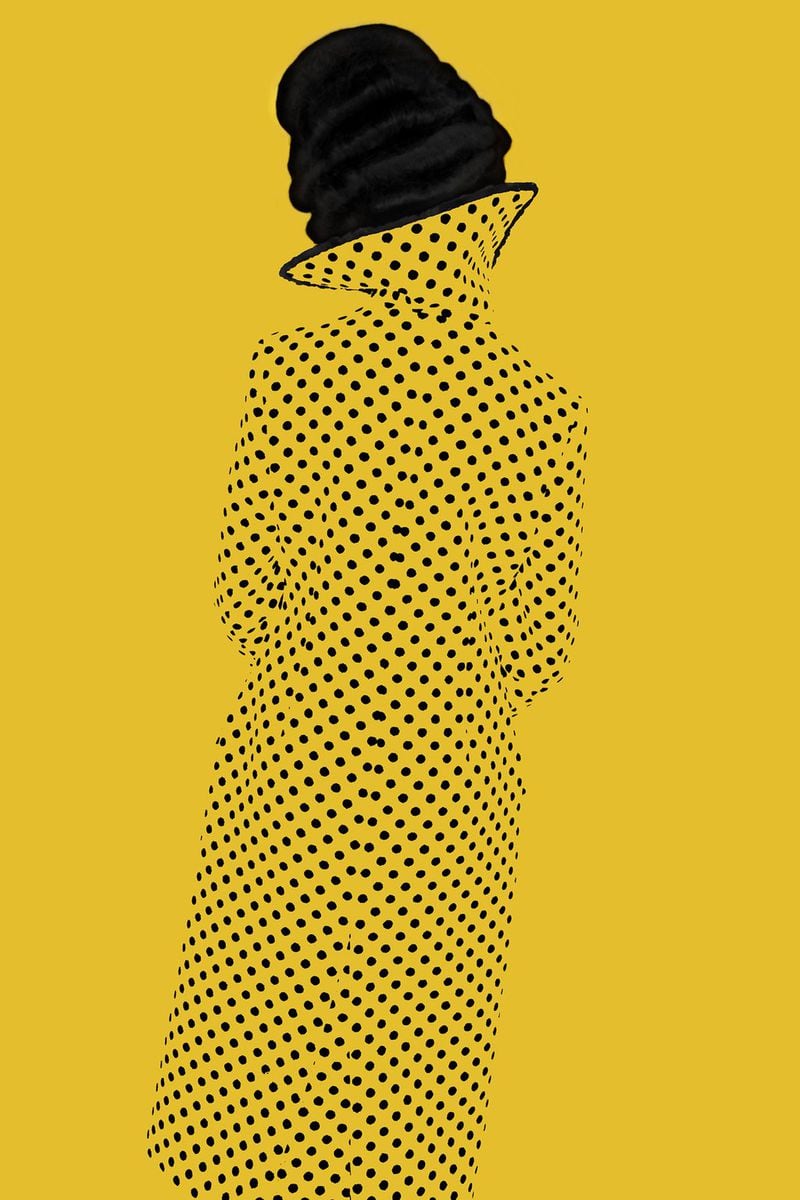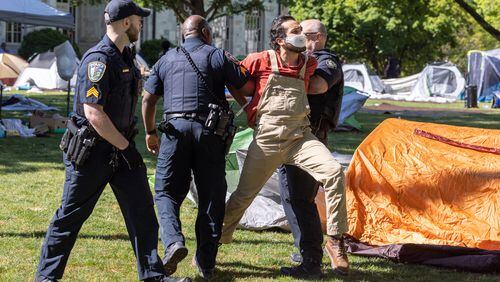Fashion photography has often crossed over into the art world: Photographers including Richard Avedon, Helmut Newton, Irving Penn, Horst P. Horst and Inez and Vinoodh have all moved back and forth between their commercial work and gallery and museum shows.
A younger fashion photographer working in that same tradition, New York-based, Parsons School of Design grad Erik Madigan Heck's fashion work has been featured in spreads in The New York Times Magazine, Vanity Fair and Harper's Bazaar UK. But as magazines shrink or disappear altogether, that movement of fashion photographers into galleries makes even more sense; the art gallery is a new, alternative market in a precarious print world.
RELATED | Art review: Glamorous gowns give new meaning to made in China
Blown up and isolated away from their original magazine context, Heck's images on view at Jackson Fine Art in his show "Old Future" are a vision of poreless, wrinkle-free, stray hair-absent perfection, a beauty so skillfully manipulated it borders on abstraction. In works like "Three Colors," a woman in a face-obscuring picture hat and white suit with red accents is set against an acid blue background. The image's flat surface and hypervivid color give it an airless, manufactured look, like a vintage travel poster advertising a Riviera beach vacation.
Though the majority of works in “Old Future” are shot in studios under controlled conditions, occasionally Heck pulls his models out of the studio, placing them in nature against a backdrop of flowers or forest, though the airless, world-under-glass quality remains.
Heck, whose own mother was a painter, approaches his photographs with a painterly eye, amping up the color to an almost cartoonish degree to give his photographs a surreal effect, his models partly graphic, partly human. Even as he’s ratcheting up the color, he is flattening details and textures, offering up a final image that looks like something between an Alex Katz painting and a Campbell’s soup can label. His reds burn with the hellfire tints of a Max Fleischer devil, and his blues look like the chemical sapphire of a David Hockney swimming pool. Colors pulsate off Heck’s photographs’ surfaces with an almost psychedelic effect. Heck often sets his models against pitch black backgrounds, the better to emphasize what a fashion photographer is wont to highlight: gorgeous clothes from Gucci, Valentino and Etro that explode like poppies from the frame.
The work is pretty and striking, and probably in the context of the parade of youth, luxury and money in a fashion magazine context, genuinely arresting. But the photographs are probably less interesting in the context of an art gallery where his waxen-skin young men and raven-haired women are as uniformly beautiful as a lacquered porcelain vase. You can appreciate the workmanship even if you don’t want to stand around looking at it for very long or find much swimming beneath the surface.
Heck also tends to lean on a lexicon of certain gestures like a repeated pose, seen throughout “Old Future,” in which his models turn away from the camera, denying us the rich reward of every portrait: a glimpse of another human being. The device adds a frisson of mystery to his photographs, but also serves the fashion photographer’s ultimate mission of highlighting the luxurious, richly patterned clothes above all.
Heck's work is paired with some saucy renditions of the female body from renowned Hungarian-born photographer André Kertész. Kertész's black-and-white photos from the 1930s are a kind of surrealist eroticism very different from his iconic street photography. Though Kertész himself resisted working in fashion, in some sense Kertész's work here — like Heck's — also does its part to turn the female body into a tantalizing abstraction. Taken for the French magazine Le Sourire, Kertész looks at the female body as it is reflected in a distorting, funhouse mirror, and the result is equal parts comedy and horror, with a touch of eros to spice the whole brew.
ART REVIEW
Erik Madigan Heck, “Old Future”; André Kertész, “Girl Before a Mirror”
Through March 17. 10 a.m.-5 p.m. Tuesdays-Saturdays. Jackson Fine Art, 3115 E. Shadowlawn Ave., Atlanta. 404-233-3739, www.jacksonfineart.com.
Bottom line: Two photographers, one a contemporary fashion photographer and the other a long-admired pillar of modernist street photography, survey the draped and undraped female form.
IN OTHER NEWS:
